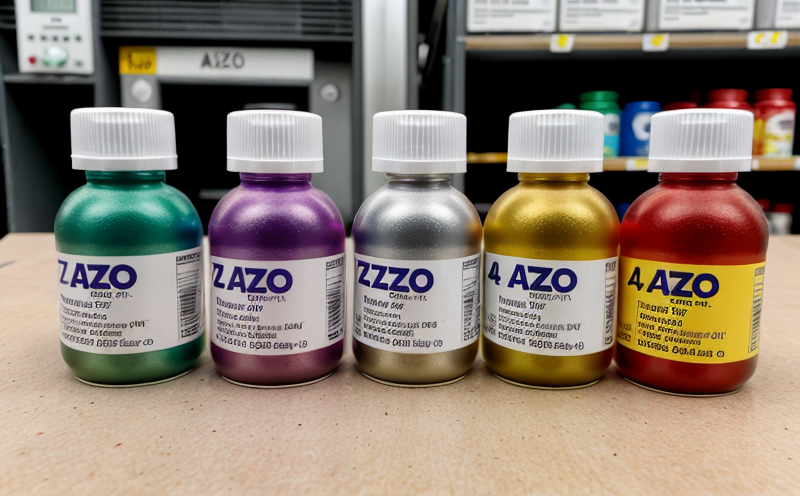DIN 54232 Determination of formaldehyde and metals in textiles
The DIN 54232 standard is an essential tool for laboratories specializing in textile testing. It provides a robust method to determine the levels of formaldehyde and heavy metals present in textiles, ensuring that these products meet stringent safety standards set by industry regulations.
Formaldehyde, a key component in many textiles, can be harmful if not controlled properly. This test ensures that textiles are safe for end-users, especially those who may come into prolonged contact with the material, such as clothing and upholstery. Heavy metals like chromium, nickel, and cobalt, when present at high levels, can pose significant risks to human health and the environment.
The methodology described in DIN 54232 involves several stages, starting with sample preparation. This includes cutting the textile samples into small pieces that are representative of the entire batch being tested. The samples are then treated to release formaldehyde through hydrolysis or other approved methods. For heavy metals, a dissolution process is used to make these elements soluble for analysis.
After preparation, the samples undergo instrumental analysis using advanced chromatography techniques and spectrophotometry. These instruments provide precise measurements of both formaldehyde concentration and metal content. The results are compared against established thresholds defined by relevant international standards such as ISO 14195 for formaldehyde and EN 730 for heavy metals.
Accurate reporting is crucial, ensuring that clients receive detailed information about the presence and quantity of these elements in their textiles. This data helps manufacturers make informed decisions regarding production processes and material selection. Compliance with regulations like Oeko-Tex Standard 100 further underscores the importance of this testing.
| Parameter | Unit | Acceptance Criteria |
|---|---|---|
| Formaldehyde (free) | % | <0.2% for Class 1, <0.35% for Class 2 and 3 textiles |
| Cadmium | mg/kg | <60 mg/kg |
| Chromium VI | mg/kg | <10 mg/kg for Class 2 textiles, <30 mg/kg for Class 3 textiles |
The DIN 54232 protocol is critical not only for ensuring product safety but also for maintaining a positive brand image and compliance with international standards. By adhering to this method, laboratories can offer clients peace of mind knowing that their products meet the highest safety and quality benchmarks.
Scope and Methodology
The DIN 54232 standard outlines a comprehensive approach to testing formaldehyde and heavy metals in textiles. The scope encompasses various types of textile materials, including woven fabrics, knitted items, and non-woven products. This ensures that the test is applicable across the entire textile industry.
The methodology begins with an initial examination of the sample, where technicians assess its condition and suitability for testing. Preparation involves cutting the samples into small, uniform pieces to ensure representativeness. For formaldehyde determination, the samples are subjected to a hydrolysis process, which releases any bonded formaldehyde present in the textile.
Heavy metals like chromium, nickel, and cobalt are detected through dissolution methods that break down these elements into their ionic forms. This step is critical for accurate quantification using subsequent analytical techniques. Chromatographic instruments such as gas chromatography (GC) or liquid chromatography (LC) are employed to separate the compounds based on their physical and chemical properties.
Spectrophotometric methods, including atomic absorption spectroscopy (AAS), inductively coupled plasma optical emission spectrometry (ICP-OES), and inductively coupled plasma mass spectrometry (ICP-MS), are used to measure the concentration of formaldehyde and heavy metals. These instruments offer high sensitivity and precision necessary for accurate quantification.
Industry Applications
The DIN 54232 method finds extensive application in various sectors, primarily focusing on the textile industry. Quality managers rely heavily on this standard to ensure that products meet stringent formaldehyde and heavy metal limits set by international standards like Oeko-Tex Standard 100.
- Textile Manufacturing: Used during the raw material selection process to screen for potentially problematic compounds.
- Fashion Designers: Employed in final product testing to validate compliance with safety regulations before launch.
- R&D Engineers: Integrated into developmental stages to explore new materials and processes that meet safety criteria.
The results of DIN 54232 tests are also crucial for procurement departments, ensuring that only compliant suppliers are used. This helps maintain brand integrity and customer trust.
Use Cases and Application Examples
- Textile Compliance: Testing is conducted on new fabric batches to ensure they meet Oeko-Tex Standard 100.
- Fashion Line Launch: Final product testing before retail release, ensuring all components are safe for consumer use.
- Supply Chain Management: Auditing suppliers and third-party manufacturers to verify compliance with formaldehyde limits.
| Test Parameter | Application Example |
|---|---|
| Formaldehyde (free) | Testing new fabric batches for compliance with Oeko-Tex Standard 100. |
| Cadmium | Monitoring the safety of zippers and metal components in children's clothing. |
| Nickel | Evaluating button fasteners used on medical gowns to ensure safe wear for healthcare professionals. |





